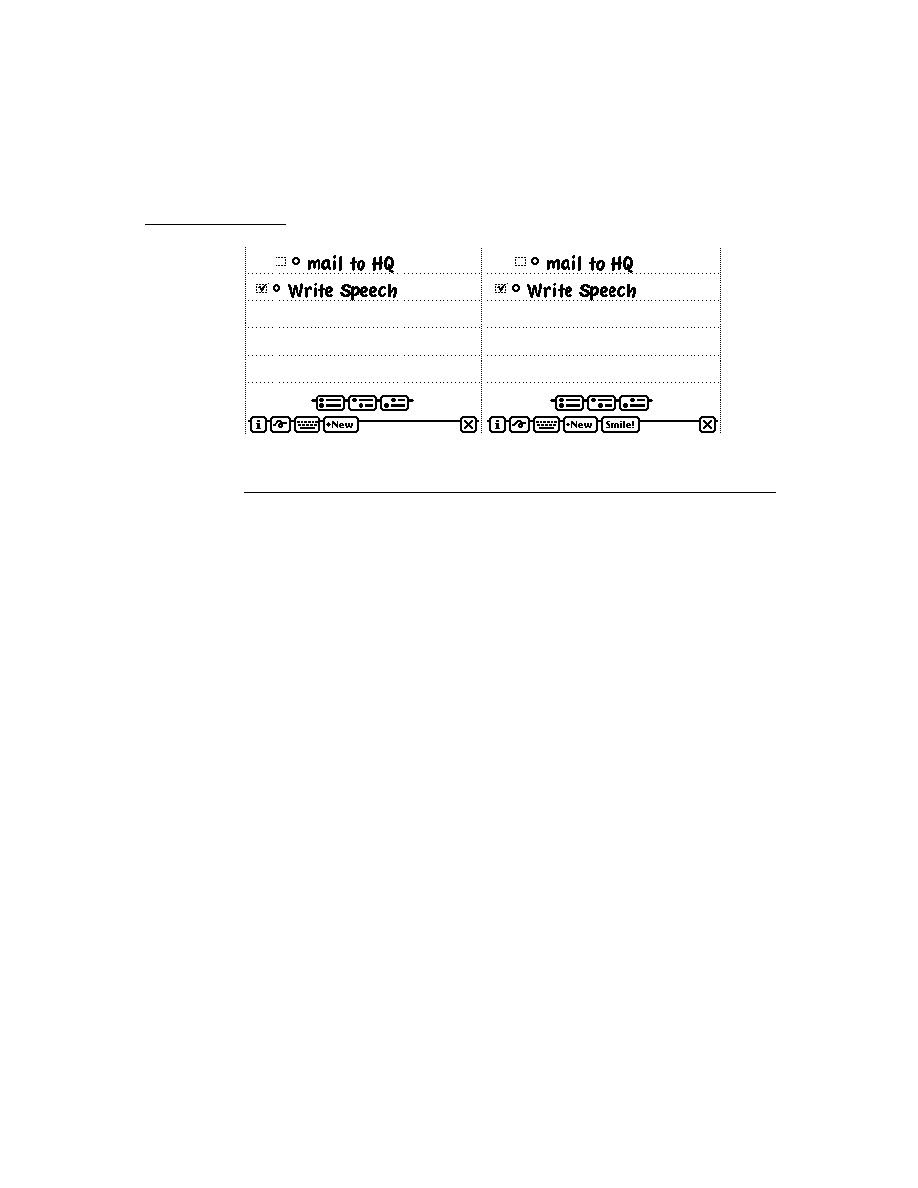
C H A P T E R 2 2
Transport Interface
Using the Transport Interface
22-23
Using this set of predefined status templates gives all transports a similar user
interface and matches the use of other status views throughout the system.
interface and matches the use of other status views throughout the system.
For more detailed information on
protoStatusTemplate
and the predefined
subtypes, refer to Chapter 17, "Additional System Services."
Controlling the Status View
22
Your transport should display a status view to the user whenever it is engaged in
a lengthy activity such as sending or receiving data. In general, this means you
must display a status view as part of the processing you do whenever you receive
a
a lengthy activity such as sending or receiving data. In general, this means you
must display a status view as part of the processing you do whenever you receive
a
SendRequest
or
ReceiveRequest
message that results in the transmission
of data.
To display a status view, use the transport method
SetStatusDialog
. If the
autoStatus
slot of the transport preferences frame is
true
, the status view
opens automatically when you send the
SetStatusDialog
message with a
status other than
'idle
as the first parameter. If the status view is already open,
SetStatusDialog
updates the status view with the new status information you
pass to it. If
autoStatus
is
nil
, the status view does not open because the user
has set a preference that it not be shown.
Here is an example of how to use the
SetStatusDialog
method:
:SetStatusDialog('Connecting, 'vStatus, "Looking for host...");
The
SetStatusDialog
method takes three parameters. The first is a symbol
indicating what the new transport status is. This is typically one of the slots in
the
the
dialogStatusMsgs
frame, such as
'Connecting
, or
'Idle
. The
second parameter is the name of the status subtype you want to use. You can
specify one of the built-in subtypes described in the previous section, or the
name of a custom subtype that you have constructed. (You specify the value of
the
specify one of the built-in subtypes described in the previous section, or the
name of a custom subtype that you have constructed. (You specify the value of
the
name
slot in the subtype template.) For information on constructing
custom
protoStatusTemplate
view subtypes, see Chapter 17, "Additional
System Services."
The third parameter is typically a frame that contains one or more slots of values.
Each slot corresponds to a single child view within the subtype you are using, and
it sets the value of that child view. A slot name is the value of the
Each slot corresponds to a single child view within the subtype you are using, and
it sets the value of that child view. A slot name is the value of the
name
slot in the
child view you are setting, and the value is whatever important value that type of
view uses. The slot names and the expected values for the predefined status
subtypes are listed in the "Important values" column in Table 22-1.
view uses. The slot names and the expected values for the predefined status
subtypes are listed in the "Important values" column in Table 22-1.
The following examples show how you'd use the
SetStatusDialog
method to
set the different status subtypes to create the status views shown in Figure 22-1.